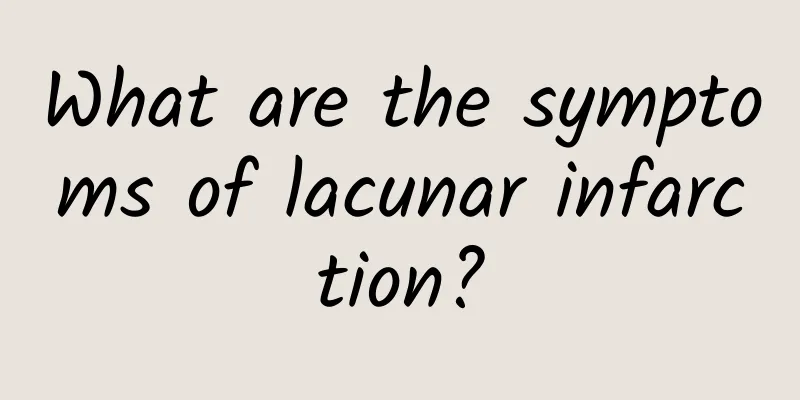What are the symptoms of lacunar infarction?

|
Lacunar infarction is a common neurological disease, mainly caused by hypertensive arteriosclerosis. Lacunar infarction is more common in the elderly population, and the chance of developing lacunar infarction is very high. The symptoms of lacunar infarction are mainly manifested in nausea and vomiting. 1. Mesencephalic thalamic syndrome: It is usually caused by occlusion of the deep perforating branches of the posterior cerebral artery, the thalamic, hypothalamic, and paramedian midbrain arteries. The typical infarct is butterfly-shaped, involving the bilateral paramedian midbrain, thalamic base, and thalamus. Clinical manifestations include unilateral or bilateral oculomotor nerve palsy, Parinaud syndrome, or vertical gaze palsy with drowsiness, loss of consciousness, and memory impairment. 2. Inferior basilar artery syndrome: It is caused by occlusion of small branches of the lower basilar artery or upper vertebral artery, leading to infarction of the hypothalamus and brainstem tegmentum. Symptoms include vertigo, nystagmus, diplopia, lateral gaze paralysis, internuclear ophthalmoplegia, dysphagia, cerebellar ataxia, unsteady gait, facial muscle weakness, burning sensation in the eyes, and numbness in the trigeminal nerve distribution area. 3. Dysarthria and clumsy hand syndrome: It accounts for about 20%, and the lesions are located at the base of the pons or the anterior limb of the internal capsule and the knee. It manifests as obvious ataxia, dysarthria, dysphagia, mild weakness of one hand and fine motor disorder, and may be accompanied by ipsilateral central facial and tongue paralysis, hyperreflexia and positive pathological signs, unstable gait when walking, but no sensory impairment. This type of disease is not preceded by TIA, has an acute onset, and symptoms reach a peak rapidly. 4. Pure motor hemiparesis: PMH is common, usually involving lesions of the contralateral posterior limb of the internal capsule or pons, manifested by mild hemiplegia of the face and upper and lower limbs to roughly the same degree, without sensory, visual and cortical dysfunction such as aphasia. Brainstem lesions do not cause vertigo, tinnitus, nystagmus, diplopia and cerebellar ataxia, and usually begin to recover within 2 weeks. PMH can also be caused by occlusion of the internal carotid artery or middle cerebral artery, subdural hematoma or space-occupying lesions in the brain. |
<<: What are the symptoms of a minor stroke?
>>: How to prevent cervical spondylosis? Prevention and treatment methods for cervical spondylosis
Recommend
At what age does menstruation stop
When a woman's sexual organs mature, an egg i...
Ear root nerve pain
There are many nerves distributed in the human br...
3-year-old oral ulcer
The pain caused by oral ulcers is very obvious. A...
How is anencephaly formed?
Anencephaly is a phenomenon that many parents are...
Detoxification and freckle removal methods
Many women are trying to remove spots. Due to var...
How to treat prickly heat
Prickly heat is mainly a kind of situation. It is...
What are the commonly used recipes for making wine with Epimedium?
Soaking in wine is a particularly commonly used m...
What is the reason for feeling weak and exhausted?
We may all feel weak and tired occasionally. Weak...
Can I get AIDS if I have a high risk exposure?
Everyone knows that high-risk sex is very dangero...
What are the traditional Chinese medicine treatments for aplastic anemia?
Aplastic anemia is a common disease of decreased ...
Posterior circulation cerebral infarction
Patients with posterior circulation ischemic cere...
Can Astragalus and Chrysanthemum be soaked in water together?
Can Scutellaria baicalensis and Chrysanthemum be ...
Is it true that egg shells can supplement calcium?
Eggshells do have a certain calcium supplement ef...
Does gout require long-term medication?
Gout is a relatively serious disease. When gout a...
Is the baby's leg longer a boy or a girl?
Some people say that the length of the fetus'...









